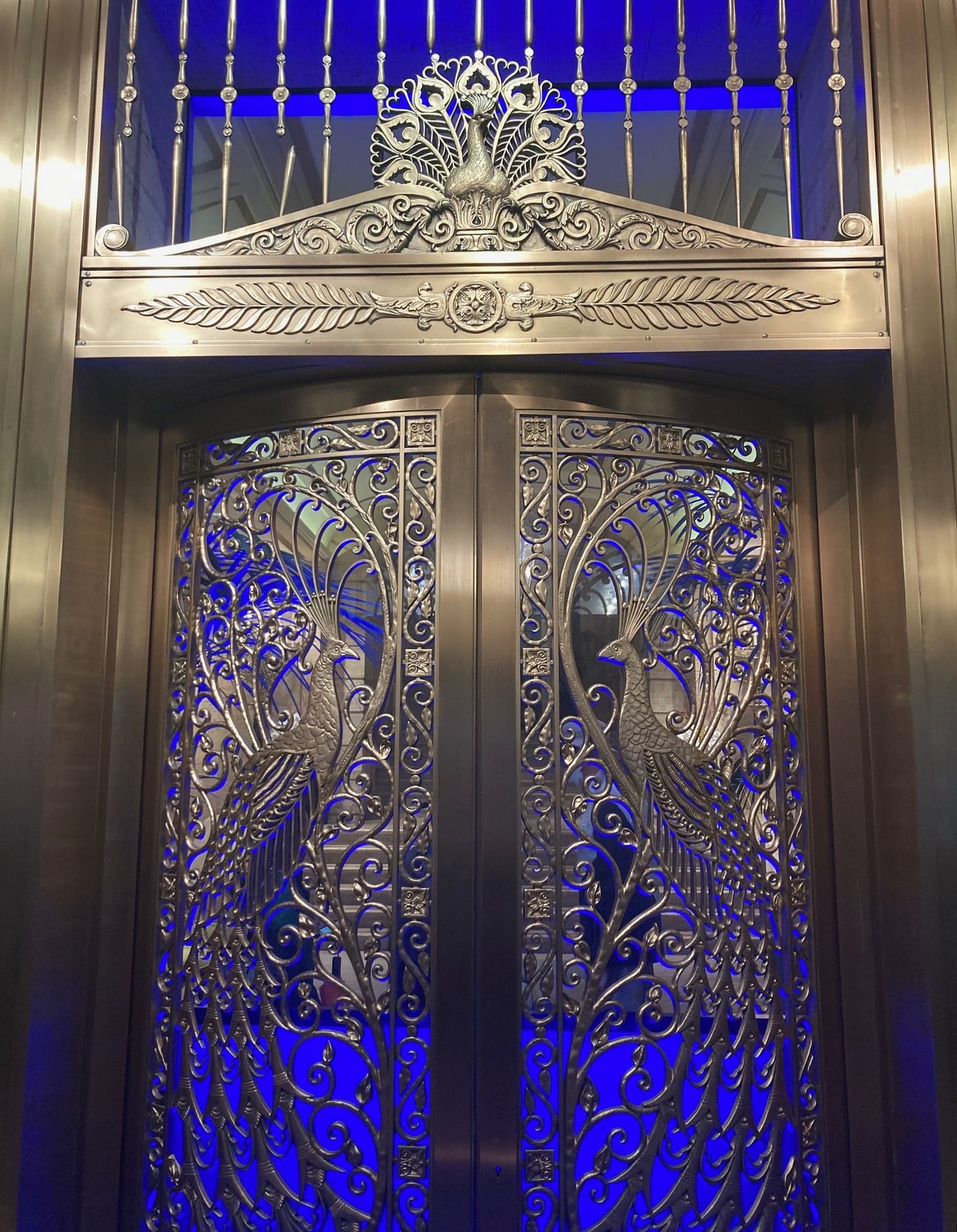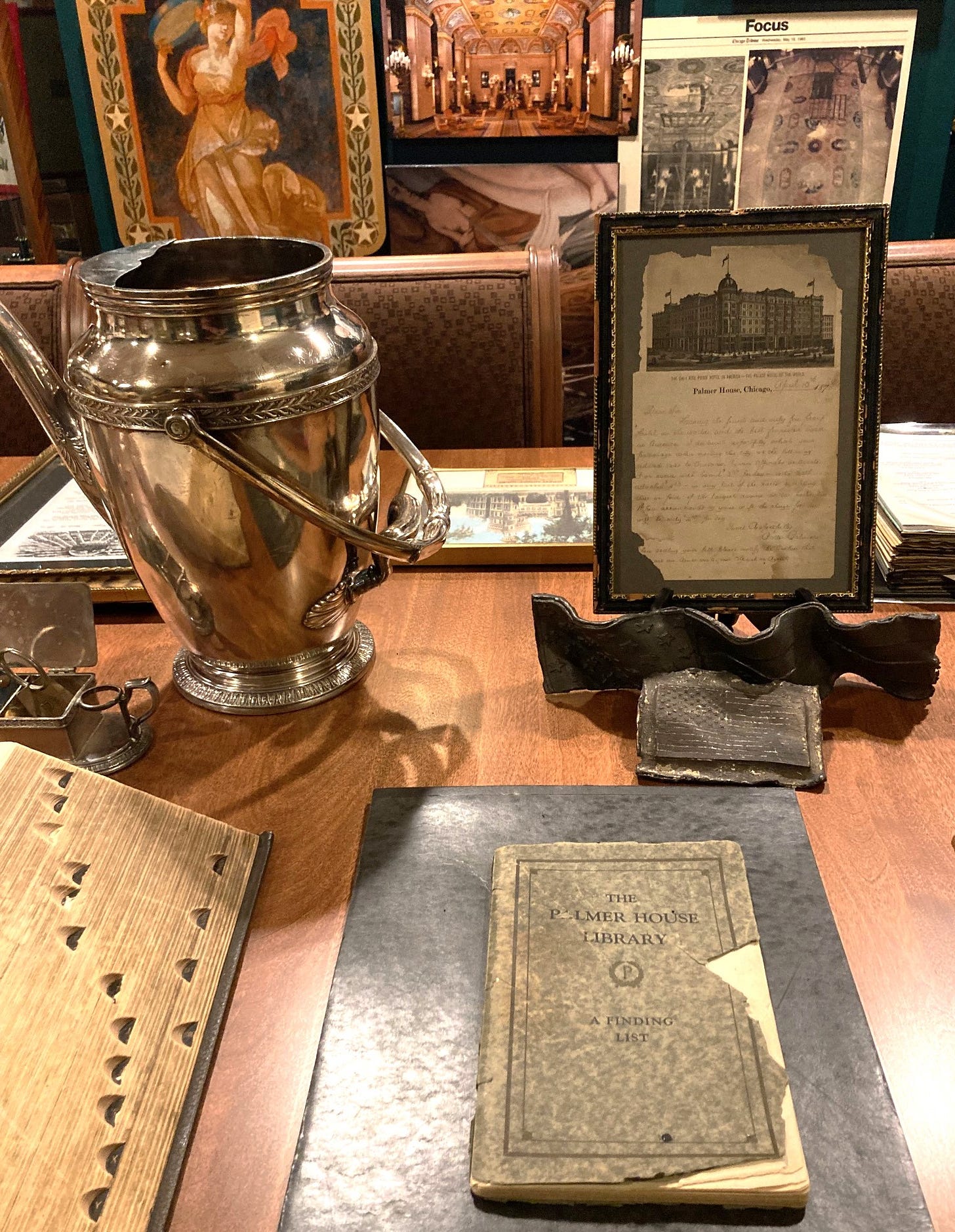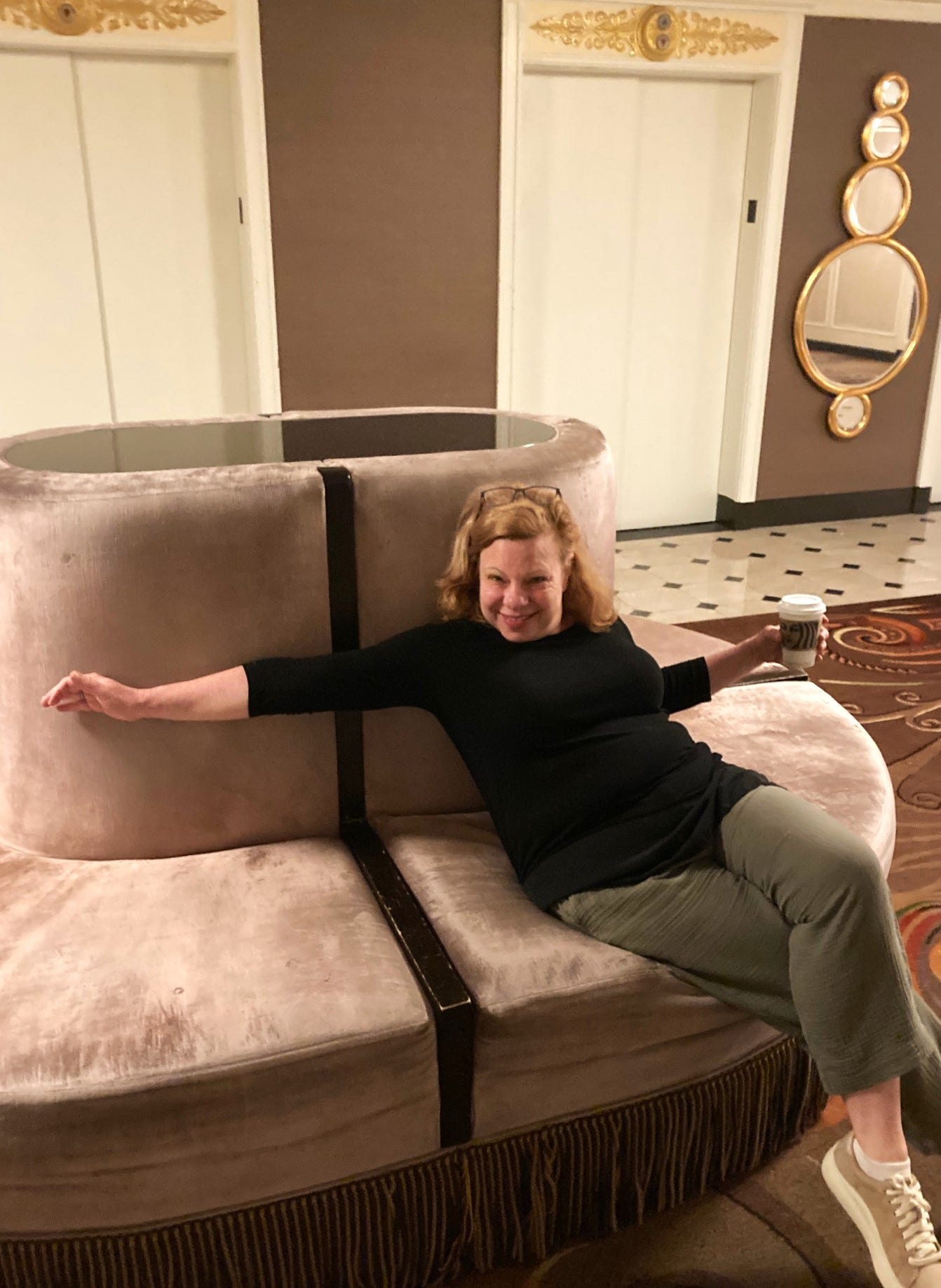
There are plenty of fun things to do in a hotel room, from shutting the blackout curtains and falling into a deep and dreamless sleep, to the obvious: pouring yourself a drink from one of those little bottles that’ll cost you $10 at checkout, draping your face in the lavender-chamomile mask you got in your stocking two Christmases ago, and clicking “play” on the latest episode of your favorite true-crime podcast.
If you’re staying at a Dull Modern Chain Hotel, engaging in the above and/or any other in-room activities you might come up with to the exclusion of seeing other parts of the hotel is perfectly acceptable and understandable.
But what if you find yourself—perhaps purposefully book yourself—at NYC’s The Plaza, D.C.’s The Willard, or any one of thousands of lovely, historic hotels dotting Planet Earth? These places house so much history, they’re so atmospheric and so damn interesting, that failing to explore beyond your room should incur a “lack of curiosity” surcharge when you check out.
Before you think I’m suggesting that you should get all creepy and rattle the doorknobs of strangers’ doors, that’s absolutely not what I’m talking about. Eww.

What I’m suggesting is that, since either you or your employer is paying good money for you to live in a cool place for a night or few, why not take advantage of the opportunity to peek into its public rooms, read about its history, and peruse the photographs and paintings lining its hallways?
What I’m suggesting is that you join the ranks of Hotel Explorers.
My interest in hotel exploration blossomed during the 1990s, when I traveled frequently for work and pleasure. One memorable adventure peaked with me drinking champagne on the rooftop of San Francisco’s Villa Florence hotel, courtesy of a passing room service waiter who, after gifting me the bottle, pointed out the unlocked door to the roof and asked if he could join me.
Thanks for the bubbly, but no.
More recently, curiosity led my husband and me to nose around the luxury cottage where JFK and Jackie (yes, his actual wife!) stayed at the Half Moon in Jamaica for the month prior to his presidential inauguration.


Just last month, I went on a most educational and enjoyable excursion through the glorious hallways, byways, ornate event rooms, and more at that grande dame of Chicago hotels: the Palmer House.
I was in town to see an exhibit of Remedios Varo’s paintings at the Art Institute.

Though I’d never laid my head on a Palmer House pillow, I’d oohed and aahed in its lobby on numerous occasions during the 15 years that I lived in the Chicago area. Said oohing and aahing usually occurred during my annual December walk through festive hotel lobbies from The Drake (where you’ll definitely want to splurge on afternoon tea) south to the Congress Plaza.

Upon entering the Palmer House, I spotted silver serving pieces in a curio case that also included a picture of Mark Twain and information about “The Greatest Banquet in American History.” When I read that Twain was master of ceremonies and that President Ulysses S. Grant was guest of honor at the 1879 feast, I thought, “Oh, that must have been a fun evening.” However, after learning that “the dinner was preceded by no less than 15 speeches that lasted well into the wee hours of the morning,” I thanked my lucky stars that I’d dodged that bullet by 144 years.
I wanted to keep exploring; however, “the wee hours of the morning” would soon be upon me (you’ll be stunned to learn that 21st-century air travel delivered me from Boston Logan to Chicago O’Hare several hours late), so I went to my room and laid my head down on a Palmer House pillow for the first time. The room itself was a bit shabby—I’m sorry, “dated”—but the bedding was quite comfy.
The next 30 hours were a whirlwind, what with transcending at the Varo exhibit and dining with an old friend—hey there, B!—bookended by that first truncated night of sleep and the following night’s fully refreshing slumber.
I arose that second morning fully intending to rack up 15,000 outdoor steps by walking along Lake Shore Drive and Michigan Ave. But, as we know from my experience in the Lower Hudson River Valley, I’m not great at sticking to plans. My fickleness generally serves me well, as indeed it did on Sept. 12, 2023, when Hotel Exploration held greater appeal than Urban Hiking.
After acquiring comfortable seating in the busy Palmer House lobby, I alternated between sipping my coffee and staring up. French muralist Louis Pierre Rigal created the 21 individual paintings that grace the ceiling, which rivals any you’ll see in Europe. I then eyeballed the business types crowding the lobby, and not a single person was paying attention to the splendor surrounding them. Not one!
Shaking my head, I ascended the escalator to the mezzanine level, peered around a corner, and discovered a glass-faced room with a sign announcing itself as The Palmer House Archive & Museum. Such alluring sights lay tantalizingly behind the glass: portraits and clippings and silver, oh my! I wanted in.
“Where can I get the key to the museum?” I asked a passing employee.
He replied that it was closed to visitors since the local historian who’d given tours had died several years before.
“Oh, that’s too bad,” I said. “I know something about the Palmers and their castle on Lake Shore Drive and the hotel—the first one didn’t last long—but I’d love to learn more.”
Apparently, I passed some sort of seriousness test, and the employee—we’ll call him “Steve” in case unlocking the museum is strictly verboten—opened the door for me.

Who exactly were these Palmers? Potter Palmer was a businessman and real estate magnate who was 23 years older than his wife, Bertha. While some historians seem to think it’s romantic that Potter met Bertha Honoré when she was 13 and he was 36—don’t worry, they didn’t marry until she was 21—I think it’s a bit creepy.
Anyway, I guess she was worth the wait because Potter gifted his now-of-legal-age bride with a brand-new luxury hotel called the Palmer House! Too bad it burned to the ground just 13 days later in the Great Chicago Fire of 1871. Undaunted, Potter rebuilt and opened the Palmer House, v2, on October 8, 1873, two years to the day after v1 was destroyed.

The museum houses a trove of interesting historical information, which Steve enhanced by telling me some of his own Palmer House experiences. The hotel had operated continuously since 1873 until COVID shut it down for eight months in 2020. Steve was one of the few employees who was required to show up for work every day. When everyone thought the Palmer House would be closed for only a week or two, he said that the experience of having the hotel nearly to himself was cool and exciting, though sometimes in a Shining way. As weeks became months, though, rattling around the 1,641 guest-room Palmer House was just sad and lonely.

While Steve and I were chatting, a sharp-dressed, 30-something businessman tapped on the door and mouthed that he’d like to gain entrance. As Steve started explaining that no one was allowed in—not very credibly, given my presence—I said, “Oh, let him in. I’ll vouch for him.”
I actually had no clue who the guy was but was so impressed that a business type wanted in on Hotel Exploration that I was willing take the risk that he’d respect the museum and its contents.
“Thank you, thank you so much,” said the man, who sported a tidy British accent. “I saw this room yesterday and was wondering how to gain admission.”
“Just don’t touch anything,” I told him.
Steve gave me an approving smile.
I don’t know how this Brit carved out time from his real business to visit the Palmer House Archive & Museum. The point is, he did. And you can too. I’d suggest arriving late at your first meeting or skipping the whole damn thing.
After all, nobody wants you there with “stomach issues,” wink, wink, nudge, nudge.

Resources:
https://www.palmerhousehiltonhotel.com
Palmer House (A Hilton® Hotel): Conceived in Love, Built on Tradition, Enduring Through Time booklet.
The Gilded Gentleman podcast, Episode #25, “Chicago’s Bertha Palmer: More than Mrs. Astor.”
The Jewel of the Gold Coast: Mrs. Potter Palmer’s Chicago, by Sally Sexton Kalmbach, Amp&rsand, Inc., 2009.
Steve





wow! can't believe you got into the museum! Very cool pictures
Sounds like a great trip... and no wonder you loved A Gentleman In Moscow!